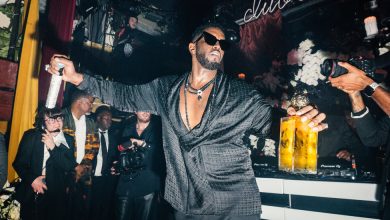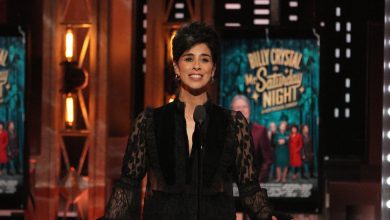‘How Do You Do?’ On Being a Gentleman in 21st-Century Ballet

In one of my first performances of George Balanchine’s “Agon,” I stood onstage, uncomfortable, while my partner, Teresa Reichlen, danced her short solo. I’d just cranked her foot to her head a few times and we were about to reunite for a kind of rubber-banding push-and-pull section. I thought: “I shouldn’t be out here.”
It was winter 2019, and conversations happening offstage and in the press about toxicity in the ballet world, particularly toxic masculinity, had altered my experience of ballets I love. I understood “Agon” to require a machismo that I didn’t think I possessed and that I knew I didn’t want. My dancing lacked conviction. I didn’t know how to make sense of dance at a moment when audiences seemed to see misconduct in all aspects of our art form.
Ballet has governed my life and shaped my body for 27 years. I have been a principal dancer with New York City Ballet since 2017, a dancer with the company since 2007, and in ballet studios since 1995, when I was 6. I have been dancing so long that the stylized specificity of ballet, even when painful, makes sense to me. Despite its rigidity, ballet has given me a freedom I haven’t found anywhere else.
But in recent years ballet has felt fraught, and finding a place for myself in the works I dance, more difficult. As the ballet world grapples with questions of relevance and representation, I don’t think I’m alone when I say I have been unsure of how I want to exist onstage. Unsure of how to be a ballet dancer today.
Finding authentic expression, and maintaining personal and artistic integrity, feels urgent but can seem at odds with the art form I know and love. Since I almost always do cavalier roles — attending, presenting and dancing opposite a ballerina — the incompatibility is most pronounced when I think of how to be a partner. Not the mechanics of partnering: I relish the physical challenge of supporting and entangling with someone else. But rather the politics of two bodies dancing together.
I’ve performed the central pas deux in “Agon” just four times. It’s not a natural fit for me. The duet, choreographed by Balanchine in 1957 for Arthur Mitchell and Diana Adams, is built on tension and circus-feat-like partnering moves. It’s thrilling and surprising. Charged. Sensual.
There’s a moment when the two dancers are side by side, holding hands above their heads, and the ballerina’s foot rests on her partner’s shoulder. Balanced on pointe, the leg that connects her to him is fully extended. Then they turn, she away from him and he toward her; he steps in closer, forcing her to bend the leg that is now behind her, as if he were trying to touch her head to her foot. Every time I do this part I feel cruel, like I might be tearing my partner’s hip.
My partners are flexible, and mostly they say that they’re fine, that I can step in and push the leg a bit closer to their heads. But it still feels wrong, because I know how it can look — like I’m forcing my partner to contort into an unnatural shape.
For the first years of my career, it was clear to me how to be a partner at City Ballet, the company built by Balanchine. There were stylistic imperatives particular to us: Standing with my feet together behind a partner as she turned or focusing on the weightless arc of a lift rather than on its height or duration. There was the expectation that I be assertive and project strength. And most important, there was a need to treat my partner with respect and even, at times, as though she were precious. I was to be a gentleman.
On a panel in 2018 called “Balanchine’s Guys,” Mitchell, a principal at City Ballet in the 1950s and ’60s, said of his former boss: “He was the epitome of a gentleman. And so we all learned that from Mr. B.”
And Mitchell demonstrated. “How are you?” he said, unfolding his hand as though offering it to someone. “How do you do?” He flipped his hand to extend it to his imagined partner. “Open the door. Sit down. Be a gentleman.”
With Mitchell’s articulate hands and stylish demeanor, he could have been describing a dance. There are many Balanchine pas de deux in which the man does just what Mitchell demonstrated: offer a hand, reach inquiringly — enact specific manners or a conversation of niceties and politeness. Even “Agon,” full of antagonism and dramatic stretch, requires this “gentlemanly” presentation.
In Balanchine ballets, you’re not supposed to overlay emotions that aren’t there. But the duets I dance at City Ballet were not made to bring to mind friendship, the ballerina and her gay bestie. When I partner a ballerina, romance and sex are built into the steps and the gestures we enact.
As a younger dancer, I had the impression that when the chemistry between two dancers suggested intimacy and certain possibilities, it made for a better performance. I saw an effortlessness in the way my straight male colleagues embodied this aesthetic attitude.
But when I thought I was dancing my best I felt unbound. I did not feel regal or manly. I felt freed. Freed from needing to articulate myself as anything specific. When dancing, I could just move my body and feel like myself, a queer person who loves to dance — and who loves to dance with a partner.
There is release and exhilaration, though, in embodying characters (and characteristics) foreign to me, and it wasn’t difficult to find ways to be authentic and fulfilled in cavalier roles — to build meaningful connections with my partners. But as my career went on and as City Ballet underwent changes, my acceptance of the straight romance implied in the works I danced weakened. And so did my understanding of how I wanted to be a partner on a ballet stage. In the wake of my company’s very public reckonings with how power and sex shape our workplace, some ballets began to feel restrictive and outdated.
When four prominent men in my company left in 2018 amid accusations of sexual misconduct, my instinct was to be overly performative in my respect for the women I danced with. I was determined to show an audience convinced of our company’s moral rot, the integrity of our art form.
But the accentuated manners and devotion began to feel like an entrenchment of existing problems. To always treat my partners as delicate felt like it denied them their strength and their humanity, reduced them. The choreography we execute demands that I lead them around the stage: Turn, push, pull, move them in a way that isn’t violent, but at times necessitates force and even discomfort. Like when I try to touch my partner’s foot to her head.
Returning to “Agon” last fall, Teresa Reichlen and I found ourselves unsure of how to be in the ballet. Ours was always a warm and easy relationship onstage, but it had been forged in ballets with tenderness built into the choreography. “Agon,” with its angular shapes and nervy affect, was a challenge.
It was tempting to hold onto the gentlemanly moments, when I was to make a show of presenting her, or take her hand gingerly with just my fingertips and lead her to her place on the stage. But what about the meat of the dance? The push and the risk? The manipulations, the stretching and the shape-making I did with her body, continued to feel unpleasant and callous, particularly after a shutdown of nearly two years, and for Tess, after a pregnancy.
Many of our rehearsals ended in frustration. But we talked about focusing on play and being present rather than trying to dance the ballet as we had seen it done before. I remembered hearing that Mitchell once described the pas de deux as two kittens playing. “I like that,” Tess said, and so we tried it out. Our performance probably wasn’t revelatory, but it felt good. We were more attuned to each other and to the possibilities this dance can hold.
Part of what keeps ballet vibrant is choreography that allows us to keep discovering new approaches and new ways of being. “Steps are made by a person,” Balanchine once said. “It’s the person dancing the steps — that’s what choreography is, not the steps by themselves.” Looking back to aspects of a ballet’s original intent — like when Tess and I took Mitchell’s kitten directive — can open up a ballet’s possibilities, so too can attentiveness and a focus on care.
The role of the cavalier — ballet’s “gentleman” — has been described as an attendant to a queen, but to attend can mean more than just to serve. To attend is to be attentive. As dancers we always have to be attentive to the moment and to the music. Attentive to one another. And dancing attentively need not rely only on romance or sexuality. It’s the care that is essential.
I am not discarding the consideration for my partner that Mitchell spoke of when he talked about being a gentleman, but I am trying to move away from an embodiment of manners reliant solely on implicit romance. Disregarding the pressure I used to feel to “play straight” both opens up the freedom to be myself onstage and helps crystallize what is important to me as a partner. In recent years, as my colleagues and I have navigated loss and trauma — to reorient dancing toward care feels good, feels sustaining and human.
Finding space to be oneself can be easier in new dances. Fewer preconceptions to navigate. This season I’m not dancing much because of a tear in my knee. But I worked with the choreographer Pam Tanowitz on her premiere, “The Law of Mosaics.” I didn’t want to give up the opportunity to dance for someone who only asks me to be the person I am.
Pam has built a duet for me and Sara Mearns. Sara and I dance together often, but Pam envisions something different for us. We look frankly at each other — we’re allowed to smile if we want, though it’s not a happy dance per se — and we dance side by side doing the same steps.
“This part is like a conversation,” Pam says of a moment in the middle of our duet. Unlike in other danced conversations I’ve performed on this stage, I am not bowing to Sara or performing any sort of politeness.
We just get to exist together. Sara and I face each other, holding hands. I tap my foot to my ankle then switch to the other foot. Then it’s Sara’s turn. We alternate like this in a matter-of-fact back and forth. Pam has made this dance particularly for us. Our movements hold no specific meaning other than that I’m me and she’s her and we’re dancing together.





